- Clone
- MIH35 (See other available formats)
- Regulatory Status
- RUO
- Other Names
- B7RP2
- Isotype
- Rat IgG2a, κ
- Ave. Rating
- Submit a Review
- Product Citations
- publications

-

Mouse B7-H3-transfected P815 cells were stained with CD276 (B7-H3) (clone MIH35) PE/Cyanine7 (filled histogram), or rat IgG2a, κ PE/Cyanine7 isotype control (open histogram).
| Cat # | Size | Price | Quantity Check Availability | Save | ||
|---|---|---|---|---|---|---|
| 135613 | 25 µg | 124 CHF | ||||
| 135614 | 100 µg | 329 CHF | ||||
B7-H3 is a type I transmembrane protein belonging to the B7 family of co-stimulatory proteins. B7-H3 is mostly expressed on professional APCs including B cells, macrophages, and dendritic cells at low levels. It is detected on various human and murine tumor cells, nasal and airway epithelial cells. Its expression on dendritic cells appears to be up-regulated by LPS. Initial studies have shown that B7-H3 provides a stimulatory signal to T cells. However, recent studies suggest a negative regulatory role for B7-H3 in T cell responses. Mouse B7-H3 protein inhibited T cell activation and effector cytokine production. Thus, the immunological function of B7-H3 remains unclear. B7-H3 is involved in the suppression of Th1-mediated immune responses and plays an important role in the development of pathogenic Th2 cells in a murine asthma model. Monoclonal antibody against B7-H3 enhances T cell proliferation in vitro and leads to exacerbated EAE in vivo. It has been reported that the Triggering Receptor Expressed on Myeloid cells (TREM)-like Transcript 2 (TLT-2, TREML2) is a receptor for B7-H3 in mice, although it remains controversial. Further studies are needed to identify the receptor of B7-H3.
Product DetailsProduct Details
- Verified Reactivity
- Mouse
- Antibody Type
- Monoclonal
- Host Species
- Rat
- Immunogen
- Mouse B7-H3 transfected L cell and P815
- Formulation
- Phosphate-buffered solution, pH 7.2, containing 0.09% sodium azide.
- Preparation
- The antibody was purified by affinity chromatography and conjugated with PE/Cyanine7 under optimal conditions.
- Concentration
- 0.2 mg/ml
- Storage & Handling
- The antibody solution should be stored undiluted between 2°C and 8°C, and protected from prolonged exposure to light. Do not freeze.
- Application
-
FC - Quality tested
- Recommended Usage
-
Each lot of this antibody is quality control tested by immunofluorescent staining with flow cytometric analysis. For flow cytometric staining, the suggested use of this reagent is = 1.0 µg per million cells in 100 µl volume. It is recommended that the reagent be titrated for optimal performance for each application.
- Excitation Laser
-
Blue Laser (488 nm)
Green Laser (532 nm)/Yellow-Green Laser (561 nm)
-
Application References
(PubMed link indicates BioLegend citation) -
- Hashiguchi M, et al. 2008. Proc Natl Acad Sci USA. 105(30):10495.
- del Rio ML, et al. 2011. Transpl. Int. 24:501. (FC) PubMed
- Product Citations
-
- RRID
-
AB_2800636 (BioLegend Cat. No. 135613)
AB_2800636 (BioLegend Cat. No. 135614)
Antigen Details
- Structure
- A 49.7 kD member of the B7 family of the Ig superfamily proteins.
- Distribution
-
Mostly expressed on professional APCs, including B cells, macrophages, and dendritic cells at low level.
- Function
- Provides a stimulatory signal to T cells, plays a negative regulatory role in T cell responses as well.
- Ligand/Receptor
- The receptor has not been completely identified, but it seems to be expressed on activated T cells.
- Cell Type
- Antigen-presenting cells, B cells, Dendritic cells
- Biology Area
- Cell Biology, Immunology, Signal Transduction, Costimulatory Molecules
- Molecular Family
- CD Molecules
- Antigen References
-
1. Nagashima O, et al. 2008. J. Immunol. 181:4062
2. Prasad DVR, et al. 2004. J. Immunol. 173:2500
3. Sun M, et al. 2002. J. Immunol. 168:6294
4. Xu J, et al. 2006. Cellular and Molecular Immunology. 3(3):235
5. Ford JW, et al. 2009. Curr Opin Immunol. 21(1):38
6. Leitner J, et al. 2009. Eur. J. Immunol. 2009. 39(7):1754 - Gene ID
- 102657 View all products for this Gene ID
- UniProt
- View information about CD276 on UniProt.org
Related FAQs
Other Formats
View All CD276 Reagents Request Custom Conjugation| Description | Clone | Applications |
|---|---|---|
| Purified anti-mouse CD276 (B7-H3) | MIH35 | FC |
| PE anti-mouse CD276 (B7-H3) | MIH35 | FC |
| APC anti-mouse CD276 (B7-H3) | MIH35 | FC |
| Biotin anti-mouse CD276 (B7-H3) | MIH35 | FC |
| PE/Dazzle™ 594 anti-mouse CD276 (B7-H3) | MIH35 | FC |
| PE/Cyanine7 anti-mouse CD276 (B7-H3) | MIH35 | FC |
| PerCP/Cyanine5.5 anti-mouse CD276 (B7-H3) | MIH35 | FC |
| Ultra-LEAF™ Purified anti-mouse CD276 (B7-H3) | MIH35 | FC,FA |
Customers Also Purchased
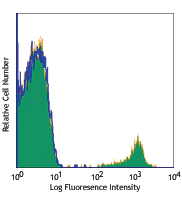
Compare Data Across All Formats
This data display is provided for general comparisons between formats.
Your actual data may vary due to variations in samples, target cells, instruments and their settings, staining conditions, and other factors.
If you need assistance with selecting the best format contact our expert technical support team.
-
Purified anti-mouse CD276 (B7-H3)

Mouse B7-H3 transfected P815 cells stained with MIH35 PE -
PE anti-mouse CD276 (B7-H3)

Mouse B7-H3 transfected P815 cells stained with MIH35 PE -
APC anti-mouse CD276 (B7-H3)
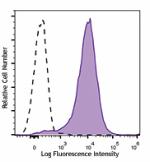
Mouse B7-H3-transfected P815 cells were stained with CD276 (... -
Biotin anti-mouse CD276 (B7-H3)
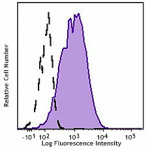
Mouse B7-H3-transfected P815 cells were stained with biotiny... -
PE/Dazzle™ 594 anti-mouse CD276 (B7-H3)
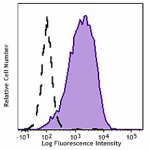
Mouse B7-H3-transfected P815 cells were stained with CD276 (... -
PE/Cyanine7 anti-mouse CD276 (B7-H3)
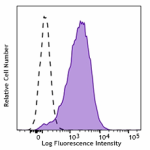
Mouse B7-H3-transfected P815 cells were stained with CD276 (... -
PerCP/Cyanine5.5 anti-mouse CD276 (B7-H3)
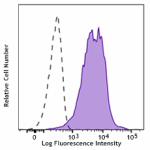
Mouse B7-H3-transfected P815 cells were stained with CD276 (... -
Ultra-LEAF™ Purified anti-mouse CD276 (B7-H3)

 Login / Register
Login / Register 










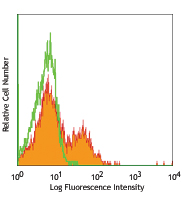
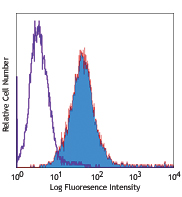




Follow Us